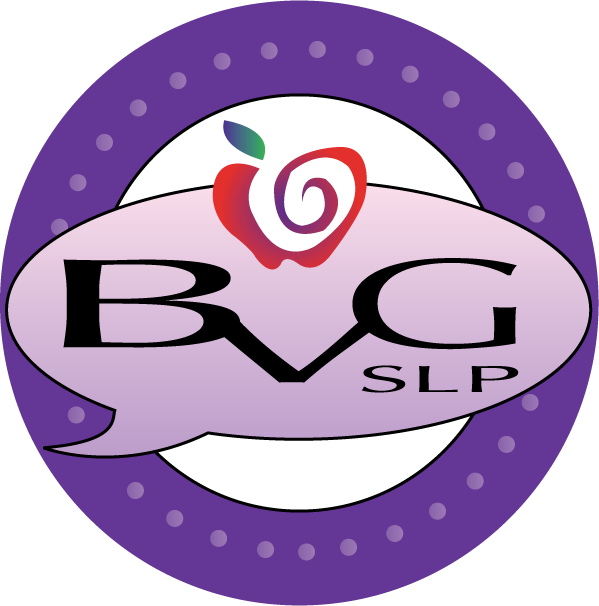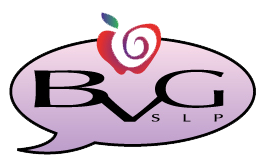Do you incorporate literacy into your articulation sessions? This weeks teletherapy tip will focus on ways to incorporate literacy into your articulation sessions. If you missed my video on literacy and the important role we play in helping to foster a love of reading, be sure to check it out HERE. Literacy is my passion! I hold an endorsement in Reading and truly love incorporating literacy into my Speech and Language sessions. There are so many possibilities to help facilitate strong confident communicators by implementing a solid literacy foundation in everything we do.

Incorporating literacy does NOT have to be difficult. Here are FIVE simple, effective, functional ways to easily incorporate literacy into your articulation sessions while still addressing your students’ target sounds.
Letter Names and Sounds Games
Phonology and phonemic awareness are extremely important for the youngest scholars on our caseloads. Making sure that they know the letters that correspond to the sounds they are working on significantly helps with emergent literacy skills. This can be done in a number of ways. Reinforce the alphabet by using simple words to drill those artic sounds. I like to also include fun songs and gestures to correspond to each sound (i.e. /b/ is the bouncing sound, /b/ is the bouncing sound, /b/ /b/ /b/…while pretending to bounce a ball).
Alphabet flash cards are a great option for quick drills at the beginning of each session. The sooner our students are able to identify letter names and sounds, the sooner we can expect carryover. The use of CVC words is another effective way to target phonology and still ensure target sounds are being addressed. The ability to discriminate sounds in words is an important prerequisite to mastering the production of clear articulated speech. This also helps tremendously with decoding words as students learn to read.
A few possible websites to find great phonology games are www.abcya.com and www.abcmouse.com. I also several resources to address phonology and articulation that all have a literacy foundation. This is one of my complete comprehensive phonology bundles that is FULL of opportunities to drill those target sounds as your students progress towards mastery.
Sight Words for Literacy and Articulation
I love using high-frequency words to address target sounds. It is very practical and reinforces key concepts that carryover to the classroom in a meaningful way. This gives students the much needed practice with words that are being utilized in their curriculum. Using high-frequency nouns is a great way to address vocabulary, naming, articulation targets and much more which makes them excellent for those mixed groups too!
It is so important for students to understand the relationship between what we do in our small group sessions and what they are working on in the classroom. It ensures a more meaningful approach and gives students multiple opportunities to practice in and out of our therapy rooms.
Creating your own simple flash cards is very effective. Allowing your students to participate in the process is a great activity. The can then use their cards to drill in the therapy room, in their classrooms, and at home for homework! For a digital task card option, these Boom Cards include 95 high-frequency sight words. They are simple, fun, and effective.
Spelling Words for Literacy and Articulation
Incorporating weekly spelling words into your sessions is a great way to reinforce the curriculum while also focusing on target sounds. Your students will appreciate the extra support as they not only master the production of their spelling words, but also are prepared to pass those weekly assessments. Have your students bring their spelling list to the session at the beginning of each week or coordinate with their classroom teachers to have the list emailed to you weekly. This is a great way to collaborate with classroom teachers to keep the line of communication ongoing.
Interactive notebooks are so easy to make and are a very effective way to address targets. Start with a composition notebook and each week have students add their spelling words. Be creative with this and include pictures, either drawn or cutouts. For mixed groups, incorporating language targets can be done very easily. Include definitions and write a sentence for each word in their notebooks.
The notebooks also serve as a great tool for continued reinforcement at home. I love digital interactive notebooks and have a complete series of options for both speech and language students. With digital options, there is no need to print and students can update them weekly in Google Slides or Google Classroom. If your students are 1:1 with their own devices, have them bring their laptops/tablets to speech. Help them become familiar with practicing their speech targets using their digital interactive notebooks.
Books for Literacy and Articulation
Books are one of my favorite things to use in my sessions. I personally love the wealth of possibilities to address SO MANY targets with books and they work great for those mixed groups! There are so many important concepts that can be addressed. Do this effectively while still ensuring your students have multiple opportunities to practice their target sounds during spontaneous speech. Identify words that contain your students’ target sounds prior to the session.
Create a simple word list for quick drills is a great way to practice. Also challenging your students to listen carefully as you read aloud and have them identify the words that contain their target sounds works great for auditory discrimination. Engage your students in discussions about what has been read. This is excellent for articulation carryover but also a very effective way to address language targets. This includes: sequencing the events of the story, answering questions about the story, retelling the story, and more.
There are a number of great curated book lists that will help you select diverse culturally responsible books (https://www.theconsciouskid.org/books). Ebooks are also a great option both for face to face and teletherapy sessions. Get Epic has a wide variety of ebooks (www.getepic.com). As an educator, you can obtain a FREE membership to Get Epic. Vooks is another site that is full of digital book options and offers multiple options to ensure you are able to find books that are high interest for your students (www.vooks.com).
For digital interactive books with built-in questions, an action sequence to drag and drop, and visual supports for retell, check out my Sequencing and Story Retell Sequence. This series is designed for mixed groups in mind. It is a great option for articulation carryover. Students will be able to practice their target sounds while also working on critical comprehension strategy skills. During the sequencing and retell section of the resource, students are able to use spontaneous speech to work on articulation targets to help facilitate carryover.
Articles for Literacy and Articulation
For those older students on your caseload, finding high interest articles is a great way to make your sessions engaging. The focus is still on addressing target sounds but with literacy as the foundation. NewsELA is a great place to find a wealth of reading passages (https://newsela.com/search/articles/). Also, encouraging your middle/high school students to bring curriculum based expository text to your sessions helps them and it is an easy, yet effective option. Not only will they be able to address their target sounds but it will be very beneficial to them to have additional support with their curriculum.
Remember, it does not have to be fancy to be effective! It does need to be meaningful, functional, and engaging to help facilitate carryover. I hope this information has been helpful and that you will find a few additional tools for literacy and articulation. There are SO MANY fun and engaging ways that you can incorporate literacy into your articulation sessions. Be creative and allow your students to help guide the process. As always, please do not hesitate to reach out if you have any questions. I’m happy to help!
DISCLAIMER: Please note that the content of this and all previous/future blog posts are for informational purposes only. Be sure to abide by and follow your company’s policies and procedures. The information contained within are tips that have worked well for me in my therapy/teletherapy room.













Leave a Reply
Your email is safe with us.